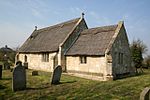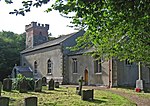Hagnaby Abbey
Lincolnshire building and structure stubsMonasteries in LincolnshireUnited Kingdom Christian monastery stubs
Hagnaby Abbey was an abbey and former priory in Hagnaby, Lincolnshire, England. It was one of nine Premonstratensian houses within the historical county. It was founded as a house for Premonstratensian canons around 1175, by Agnes, widow of Herbert de Orreby. The priory was a dependency of Welbeck Abbey and named in honour of Saint Thomas the Martyr. It achieved its independence and abbey status in 1250, and appears from surviving records to have been well run. Hagby Abbey was suppressed in 1536, its last abbot being Edmund Toft. It is an ancient scheduled monument.
Excerpt from the Wikipedia article Hagnaby Abbey (License: CC BY-SA 3.0, Authors).Hagnaby Abbey
Rossa Road, East Lindsey Hannah cum Hagnaby
Geographical coordinates (GPS) Address Nearby Places Show on map
Geographical coordinates (GPS)
| Latitude | Longitude |
|---|---|
| N 53.3017 ° | E 0.227601 ° |
Address
Hagnaby Abbey
Rossa Road
LN12 2QH East Lindsey, Hannah cum Hagnaby
England, United Kingdom
Open on Google Maps









